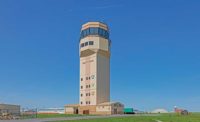B909 Renovation, Buckley Air Force Base
Aurora, Colo.
BEST PROJECT
Owner: 140th Civil Engineering Squadron, Colorado Air National Guard
Lead Design Firm & Structural/Civil/MEP Engineer: Burns & McDonnell
General Contractor: JE Hurley Construction Inc.
Architect: D2C Architects Inc.
Energy Modeling & Rebate Assistance: Group 14 Engineering
Hangar 909 serves the 140th Fighter Wing at Buckley Air Force Base. Built in 1956, the building provides maintenance, storage and operations for the Air Guard, Air Force, Army and Civil Air Patrol’s heavy equipment, including aircraft. The hangar supports the F-16 Fighting Falcon jets, F-35s and Cessna 172s and 182s as well as other aircraft that might need shelter or maintenance while at the base.
Despite playing such an important role, Building 909’s historic charm had been lost over six decades of continual use. After Sept. 11, 2001, anti-terrorism regulations required that its windows be boarded up for blast protection.
Other issues—such as a leaky roof, inefficient and failing mechanical and fire-suppression systems, a lack of accessibility for people with disabilities and the overall need to modernize its technology—were common signs of an aging facility.
This complex project reconfigured, renovated and reconditioned the hangar while returning it to its historic appearance. The design team reviewed the building’s dated drawings and spent a great deal of time evaluating condition assessments, analyzing measurements and translating those into a 3D Revit model. On the construction side, the demolition team uncovered anomalies from the design documents. Crews tackled ongoing challenges as they arose, including asbestos abatement, cracked floors, lead paint, hangar door damage, worn concrete and more.
Sustainable design is key to most facility modernization projects. Preservation efforts included maintaining a few of the hangar’s overhead monorail cranes, refurbishing existing light fixtures as LEDs and preserving handrails throughout the building. These small touches were greatly enhanced when historic artifacts were discovered in a long-forgotten storage closet, some of which are on display today.
This was also the base’s first project to include a geothermal heating system, and its success serves as an example for future projects. As a result, the base says it will implement this technology on future building projects so that it can reduce its dependence on nonrenewable energy.
Back to "Annual Awards Competition Attracts the Most Entries in Its History"





Post a comment to this article
Report Abusive Comment